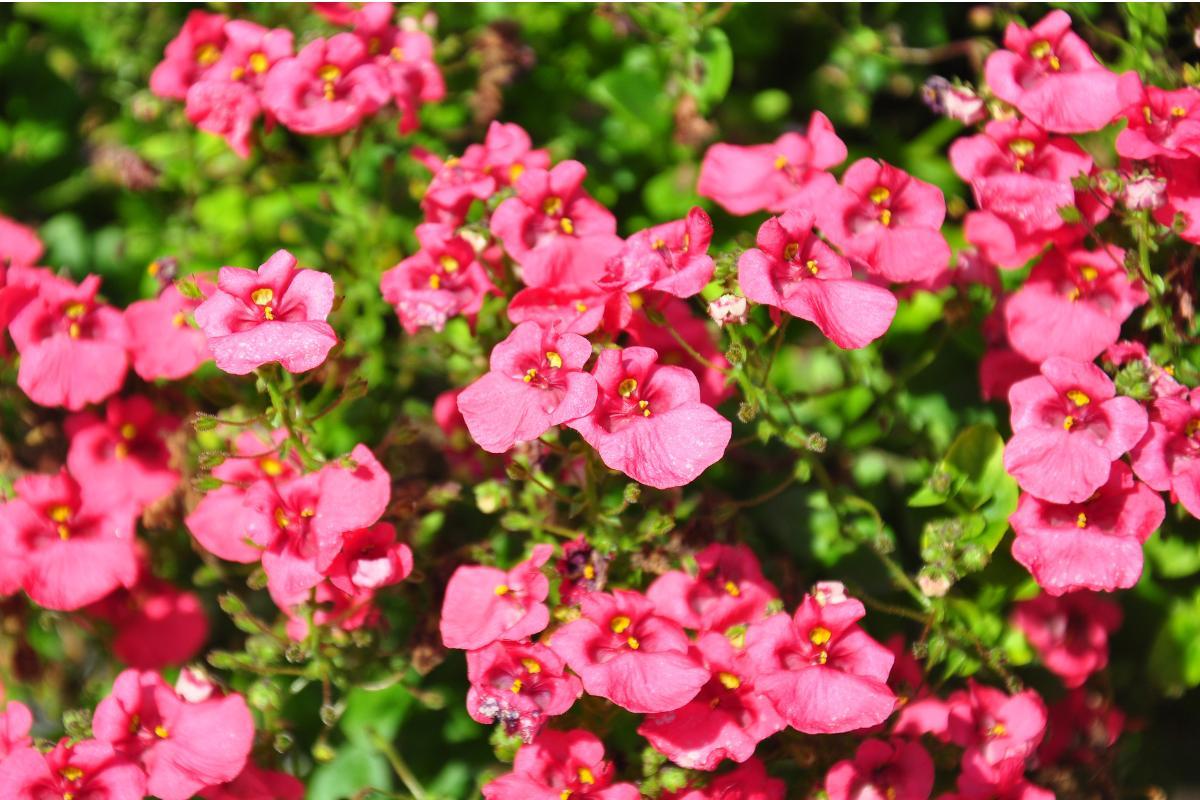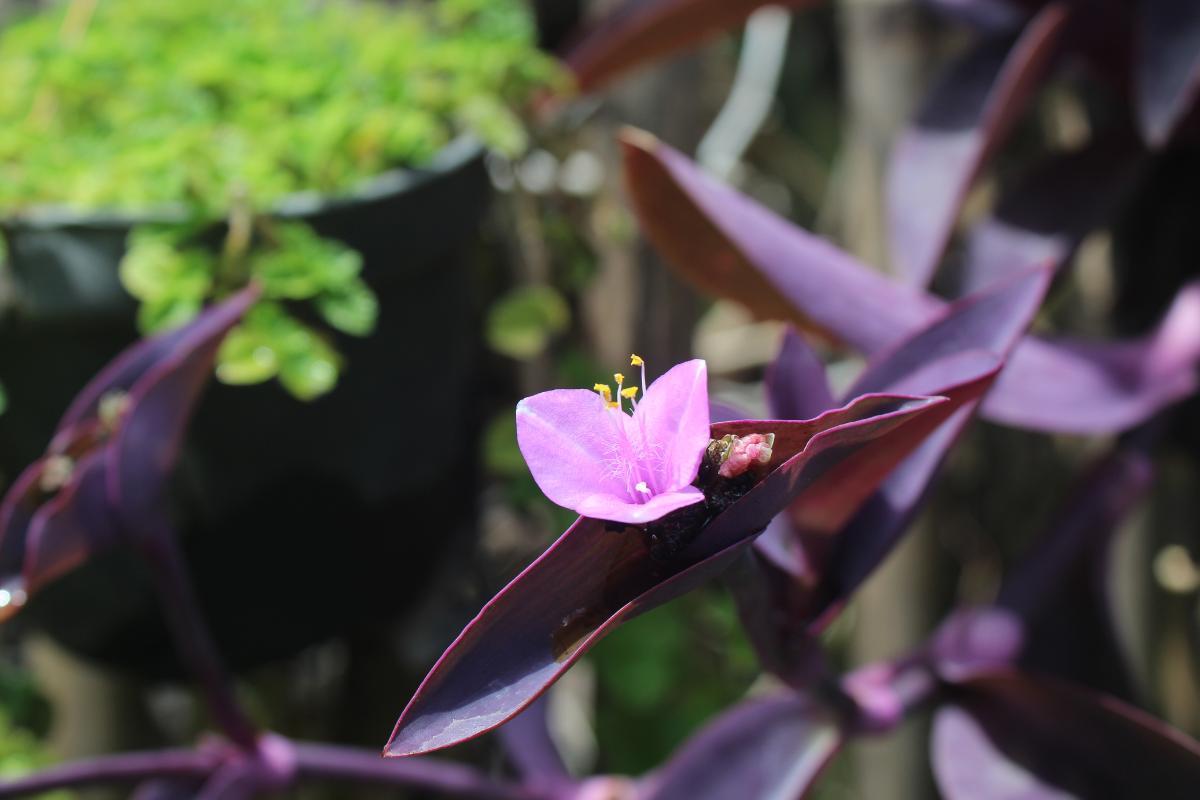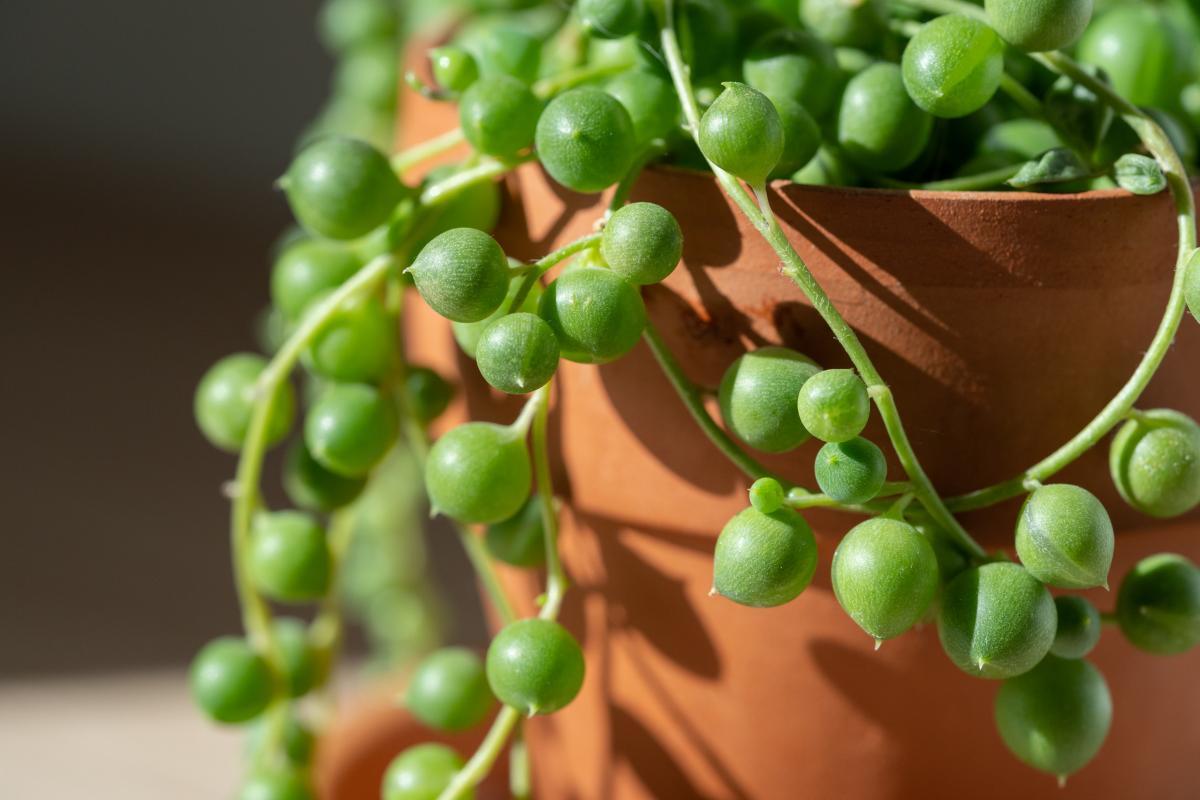Hanging Plants for Outdoor Spaces


Even the smallest of outdoor spaces can be transformed into something beautiful with the right hanging plant. Whether you are fortunate enough to have a large terrace or simply want to adorn a window, hanging plants can brighten even the dullest spaces. These can be beautiful adornments on their own, but they may also solve a problem if you want to add more plants and are running out of ground space. The best hanging plants are those with emanating leaves or blooms, although you can have others. thedailyECO reveals more by sharing the 10 best hanging plants for outdoor spaces with photos.
- Common polypody (Polypodium vulgare)
- Petunias (Petunia spp.)
- Spider plant (Chlorophytum comosum)
- Donkey tail (Sedum morganianum)
- Twinspur (Diascia barberae)
- Purple secretia (Tradescantia pallida)
- String-of-pearls (Senecio rowleyanus)
- Cissus
- Golden pothos (Epipremnum aureum)
- Lobelia (Lobelia spp.)
Common polypody (Polypodium vulgare)
While we might be thinking of hanging flowers for our outdoor space, we start with a non-flowering plant. The common polypody is a type of fern which tolerates indirect sunlight well. Placing them in a hanging planter allows the fern fronds to drape over the edge, reminding us of dense jungle forest. It can even lend a prehistoric air, since these are prehistoric plants.
Ferns are easy to care for, something aided by the fact we do not have to worry about flowers blooming. We need to ensure the substrate is enriched with the right nutrients from time to time. They don't want to be waterlogged, but the soil must be kept moist to avoid the fern drying out.
As a non-flowering plant, you may wonder how do ferns reproduce?

Petunias (Petunia spp.)
Petunias are one of the most popular hanging outdoor plants with flowers. They have generous blooms and a long flowering period that lasts from spring to autumn. Their flowers can be seen in almost all shades, except orange. the photo below shows a mix of some typical petunia varieties.
In addition to their bright flowers, petunias also have a plenty of green leaves all year round. They fill out the planter and hardly leave any gaps. When hanging, they appear as a very spectacular green wall, as if they were a cascade of flowers. They do well in direct sunlight.
Find out all about the black petunia with our guide to plants with black flowers.

Spider plant (Chlorophytum comosum)
The spider plant has many names, invariably being known as the airplane plant, ribbon plant or even hen and chickens plant. While it is most well known for its thin leaves which appear like tendrils, it is a flowering plant with small white blooms in spring and summer.
As the spider plant matures, its leaves hang down over the side of the pot. This makes it such a good hanging plant for outdoor spaces. It is easy to care for, although it should not receive light all day. Too much light can make the leaves very white and even burn them. It can tolerate both heat and cold relatively well.

Donkey tail (Sedum morganianum)
Now we reach our first succulent plant on our list of the best outdoor hanging plants. As its name suggests, the donkey's tail has hanging leaves which appear like the tail of its namesake. While they look bushy, they are soft and squidgy to the touch. This is because succulents store so much water. It is best if we place it under a roof, since it does not tolerate direct sunlight, but grows much better in semi-shade or shade. It can grow to be quite large.
Discover more about one particular type of succulent with our article on the types of echeveria succulent species.

Twinspur (Diascia barberae)
The twinspur is one of the prettiest hanging flowering plants for outdoors. This is largely due to its abundant, deep pink flowers which multiply quickly when it is well cared for. These beautiful blooms can be seen in the photo below. It is a versatile plant, as it grows well in direct sunlight, semi-shade and shade. In the latter case, it will only thrive as a green plant and without the multitude of flowers that abundant sunlight generates.

Purple secretia (Tradescantia pallida)
The purple secretia is also known as the purple-heart or purple queen, so it should be unsurprising to know this plant is purple. Perhaps it might surprise you that the purple is not in the inflorescence, but in the leaves. These purple leaves are long and hang down, providing a great hanging plant for outdoor spaces. When the flowers do bloom, they contrast beautifully with a light pink color.
If places in a tall pot, the purple secretia will grow in a trailing fashion. Although it is considered a weed in many places, it makes a beautiful plant when properly cared for. Many animals eat it, but it is not recommended for dogs and cats. This is because it contains oxalate crystals that cause health problems for them.
Discover what purple flowering plants might be good for your home environment.

String-of-pearls (Senecio rowleyanus)
Another succulent hanging plant for outdoor spaces, the string-of-pearls or string-of-beads plant has these common names due to the spherical leaves which appear like globes. It is originally from Africa. It grows in a hanging manner, with hundreds of bright green spherical leaves. As a succulent, it requires little watering. The sun should be abundant, but indirect and the temperature it needs moderate ambient temperatures.
If you want to know more about these plants, check out our article explaining the difference between cacti and succulent plants.

Cissus
Cissus is a genus of woody vines which can be incredibly versatile. If supported on a trellis or similar structure, it can be a climbing plant. If left to grow freely, its flowing leaves means it can be a great hanging plant for outdoor spaces. This is the one depicted in the photo below.
Although they are cosmopolitan, plants of the genus Cissus do best in warm environments. Due to its various species, the shape of the leaf can vary slightly, as can its shades of green. They form beautiful green walls when several groups of them are put together. They should be fertilized, pruned and repotted when necessary. It has the added advantage of looking like a huge vine.
Discover more perennial flowering vines with our related guide.

Golden pothos (Epipremnum aureum)
The golden pothos is one of the classic natural hanging ornamental plants, although it can have many varying cultivars. This plant grows quite large. It is possible to leave it hanging or train it to climb a wall or structure. It is a strong and resistant plant, meaning it should survive even if we forget to pay it some attention. We can water it directly, but it should be placed in indirect sun. Enriched soil is best and we should prune any dead leaves to help the rest of the plant.
Discover how to revive yellowing pothos leaves in our related guide.

Lobelia (Lobelia spp.)
This is the last on our list of the best hanging plants for outdoor spaces. The lobelia is very striking due to its abundance of leaves, as seen in the photo below. These can be blue, white or purple in color. When it flowers, it required a lot of sun. It also needs plenty of water to compensate and avoid drying out due to the sun's desiccating rays.
They may not all be suitable for a hanging planter, but you can check out our article on the importance and types of ornamental plants in our related article.

If you want to read similar articles to Hanging Plants for Outdoor Spaces, we recommend you visit our Outdoor plants category.
- Mayer, J. (2008). Balcony and terrace plants. Spain: Editorial Hispano Europea, S.A.
- Authors, V. (2020). 1000 plants and flowers for the garden. Spain: De Vecchi, Editorial, S.A.















